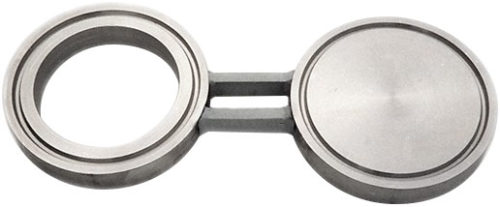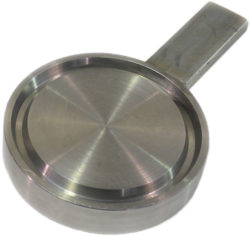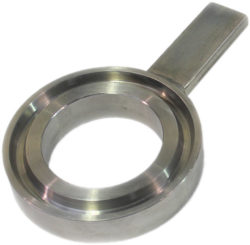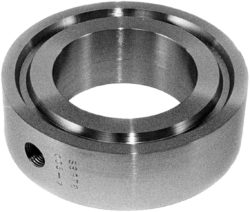Line blinds are used to isolate a section of line between a valve and a vessel or other equipment, typically for maintenance or replacement. The Figure 8 blind, or spectacle blind, is a one piece or welded assembly with a blank side and a spacer side. With this type of blind its location is easily recognized in the piping run and whether the line is “open” or “blocked off”.




Line blinds are installed between two flanges to isolate a section of piping between a valve and a pressure vessel, or other equipment, typically to block the product flow and provide safety for personnel during maintenance or item replacement.
The Figure 8 blind, or spectacle blind, is a one piece, or welded assembly, with a blank side and a spacer side. The location of the blind is easily recognizable in the piping system and whether the line is “open” or “blocked off”.
Figure 6A paddle blinds and 6B paddle spacers are similar to the spectacle blind except they are made as two separate components, each having an identification handle which, when installed, will protrude from between the associated piping flanges. In some installations the two separate components may be easier to handle than a single figure 8 blind due to weight or dimensional constraints. Larger size blinds and spacers can be furnished with lifting rings.
The figure 7 bleed rings, or drip rings, are for permanent installation between two pipe flanges such that the line can be drained prior to servicing associated equipment. It can also be used for product sampling.
These items are available in:
- Mill finish
- Machined finish
- Female ring type joint (RTJ). A male RTJ design is not recommended due to the potential for damage to the machined facing during handling and installation.
Pressure ratings for the blinds and bleed rings are from 150# to 2500#. Dimensions conform to ASME B16.48.
Line blinds and bleed rings are available in many materials including:
- Carbon steel
- Stainless steels
- Various alloys
